Olympus E-510
-
-
Written by Gordon Laing
Olympus E-510 sensor and files
More Features : Lenses and viewfinder / Screen and menus / Sensor and processing / Anti dust / Anti shake
Olympus E-510 features continued…
Lenses and viewfinder / Screen and menus / Sensor and processing / Anti dust / Anti shake
The Olympus E-510 is equipped with the same 10 Megapixel N-MOS sensor deployed in the E-410. Developed by Matsushita and conforming to the Four Thirds standard, this sensor measures 17.3x13mm, delivers 4:3 aspect ratio images and effectively reduces the field-of-view of all lenses by two times; so the optionally-bundled Zuiko Digital 14-42mm ED lens delivers coverage equivalent to 28-84mm.
|
Sporting the same sensor as the E-410, the new E-510 unsurprisingly inherits the same settings and options. Sensitivity for example is offered from 100 to 1600 ISO in the same single EV steps, unlike the finer one-third increments of the E-500. Perhaps Olympus sees this as a higher-end option reserved for its forthcoming pro model. It’s strangely basic though considering the E-510 allows you to choose single, half or one-third EV steps for compensation, aperture and shutter variations. On the upside it does at least allow quick jumps between different sensitivities.
The E-510 also offers the same noise reduction options as the E-410: a Noise Filter can be set to Off, Low, Standard or High, while Noise Reduction using dark-frame subtraction can be enabled or disabled. By default the E-510 is set to its Standard Noise Filter and with Noise Reduction On, so these are the settings we’ve used for our Coverage, Gallery and Outdoor Resolution tests. We’ve included examples with all four Noise Filter settings on our Outdoor Noise results page though and as you’ll see by turning the filter down or even off, you can retain a higher degree of detail. This reduction in the noise filter is best combined with a reduction in sharpness.
Olympus E-510 image quality settings
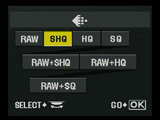 |
The E-510’s resolution and quality settings are also identical to the E-410: the maximum image size measures 3648×2736 pixels which at 300 dpi is good for reproduction at around 12x9in. Set to the highest resolution, you have the choice of two different JPEG compression ratios, along with an option to record a RAW file in the Olympus ORF format with or without an accompanying JPEG. At the time of writing, neither the E-510 nor E-410’s RAW files were supported by Adobe Camera RAW, but Olympus supplies a copy of its Master software for conversions.
Like other Olympus cameras, the best quality SHQ JPEG mode employs a very mild compression ratio of just 1 / 2.7 which essentially eliminates any compression artefacts, albeit with fairly hefty files sizes as a result – like the E-410, you’re looking at around 5.5-7.5MB for each SHQ JPEG, although with today’s large memory cards we still welcome this option. RAW files are relatively manageable though, and again like the E-410, weigh-in at around 10MB each.
If you’re shooting in RAW plus JPEG mode, a handy option on the E-510 allows you to choose whether both files are erased when you press delete, or whether it only deletes one and leaves the other; you can also choose whether the unlucky format to be erased is the JPEG or the RAW version. This option is not available on the E-410.
Olympus E-510 colour and white balance
The E-510 employs the same main image processing options as the E-410, but with subtle extras and variations in defaults. White Balance settings consist of Auto, Custom, One Touch and seven presets including daylight, shade, cloudy, incandescent and three fluorescent options. You can also fine-tune the Red and Green levels of each preset with a Live Preview if desired.
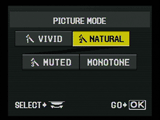 |
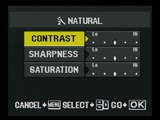 |
As with the E-410, contrast, sharpness and saturation are applied using a choice of three Picture Modes, along with an additional Monotone option. In the Vivid, Natural and Muted colour Picture Modes, contrast, sharpness and saturation can all be adjusted on a scale of -2 to +2. In the Monotone mode you can apply colour effects including a sepia tone, or simulate the use of colour filters including yellow, orange, red and green.
Reflecting the nature of their target audiences, the default Picture Modes for the E-510 and E-410 are Natural and Vivid respectively. As you’d expect, the Natural Picture Mode is more refrained than the Vivid mode and better-suited to subsequent enhancement in software. If you intend to use JPEGs straight from the camera though, the Vivid mode delivers punchier output without going over the top. To illustrate the four different Picture Modes in practice we shot the same scene with each and presented them below.
Olympus E-510 Natural Mode |
Olympus E-510 Vivid Mode |
Olympus E-510 Muted Mode |
Olympus E-510 Monotone Mode | |||
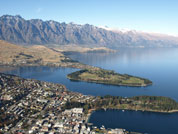 |
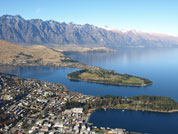 |
 |
 | |||
Whole image shrunk to fit |
Whole image shrunk to fit |
Whole image shrunk to fit |
Whole image shrunk to fit | |||
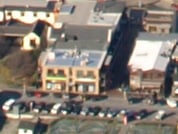 |
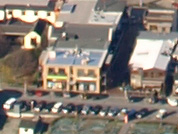 |
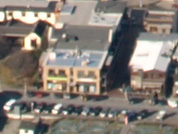 |
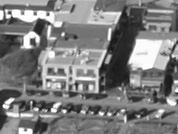 | |||
100% crop |
100% crop |
100% crop |
100% crop |
Like the E-410, the E-510 also offers a choice of Graduation options: along with the default Normal there’s High Key and Low Key settings which extend tonal graduations for subjects which are mostly highlighted or in shadow respectively. Finally, a feature inherited from the earlier E-500 and a number of other Olympus bodies, but not present on the E-410, is Shading Compensation, which digitally counteracts darkening in the corners of the frame caused by lens vignetting.
Olympus E-510 continuous shooting and handling
Olympus claims a continuous shooting rate of 3fps with up to eight frames in RAW mode. To put this to the test we fitted the E-510 with a 1GB SanDisk Ultra II Compact Flash memory card, set the shutter speed to 1/1000 and selected the continuous drive mode.
We fired-off 12 SHQ JPEGs in four seconds before the camera momentarily paused for breath then continued at a much slower rate. Switching to RAW mode, we managed eight frames in 2.6 seconds, again before the camera paused. Both confirm Olympus’ claims for continuous shooting speed and RAW buffer.
Like the E-410, the new E-510 performs a compulsory anti-dust process every time you power it up – this means the E-510 is ready for action about one second after first switching it on. This sounds much slower than the typical 0.2 second startup times of rival DSLRs when written down, but in practice it doesn’t feel particularly slow and wouldn’t affect many people.
While we like cameras which are ready for action quickly, we’d sooner sacrifice half a second or so at startup if it saves us minutes (or even hours) retouching dust from images later. It’s also of course possible to leave the camera switched-on and experience a faster wakeup from power-save by pressing the shutter release. To find out how the E-510 performs in terms of anti-dust, see our next Features page.




